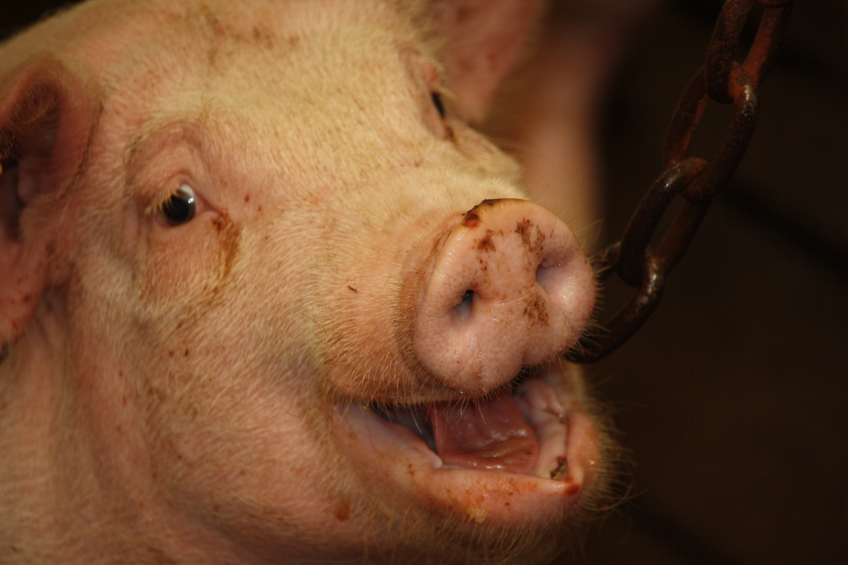Mix of glycerides reduces risk of swine dysentery

Finishing pigs have been shown to have a reduced risk of getting swine dysentery when fed a specific mix of monoglycerides and diglycerides.
The animals were also found to show an increased feed intake and achieve a better performance when fed this specific mix, called SiloHealth 103, a product by Italian animal health and nutrition company Silo.
These were conclusions presented by Italian researchers in a corner presentation at the recent International Pig Veterinary Society (IPVS) Congress, held in Cancún, Mexico.
The effects were observed in relation to the bacteria Brachyspira hyodysenteriae, one of the most important causing agents of swine dysentery.
Trial
A finishing, naturally infected by B. hyodysenteriae was divided in two units for the study. A control group of 1,022 pigs; a treatment group included 974 pigs. The control group was fed with a commercial diet, the treatment group was fed with the same commercial diet added with 0.4 ml of LB/ kg liveweight, from day 0 to day 15 and from day 99 to day 112.
The control group was divided: 508 pigs in unit 1 and 514 in unit 2. The same for the treatment group: 471 pigs in unit 1 and 503 in unit 2.
Forty sentinels were ear tag identified in the control group and forty in the treatment group (20 pigs in each of the four units) to singularly monitor performances and microbiological status. Faeces were collected individually from sentinels on day 0 (T0), day 60 (T1) and caecal content was collected at slaughterhouse.
Environmental faecal pools were sampled at day 0 (T0), day 60 (T1) and day 180 (T2). B. hyodysenteriae isolation and PCR were performed in individual faeces, environmental faecal pool and caecal content. The following zootechnical measures were recorded: total mass of pigs entering and exiting the fattening unit, weights of sentinels at day 0 (T0), 71 (T1), 120 (T2), 203 (T3), and feed consumption.
Parameters included are Total Feed Intake (TFI), Average Daily Feed Intake (ADFI), Average Daily Gain (ADG), Feed Conversion Rate (FCR), Gain/Feed ratio (G:F). Necropsy and general post-mortem investigations were performed for dead animals.
B. hyodysenteriae microbiological results in individual faeces and environmental pool samples are reported in Table 1. Swine dysentery specific anatomo-pathological lesion (colitis) and microbiology results in caecal contens in necropsied pigs are shown in Table 2. In Table 3 and Table 4 are reported microbiological results in caecal content of slaughtered pigs and zootechnical parameter data.
Infection
The researchers concluded, saying: “B. hyodysenteriae isolated in environmental and pig samples confirmed that the groups acquired infection. Infection rates were higher in the control group than in the treatment group concerning environmental faecal pools (6/16 vs 3/16), caecal contents of necropsied (6/42 vs 1/41) and slaughtered pigs (5/79 vs 2/80).”
They continued saying, “ADG and G:F were higher in treatment group than in the control group while FCR was lower in the treatment group than in the control group. The finishing pigs diet supplemented with specific mix of monoglycerides and diglycerides of short and medium chain fatty acids showed to have a reduced risk to acquire B. hyodysenteriae, increased the feed intake and improved the performance. Further studies are needed to investigate the effects against other enteric pathogens and in farms with severe clinical form of swine dysentery.”











